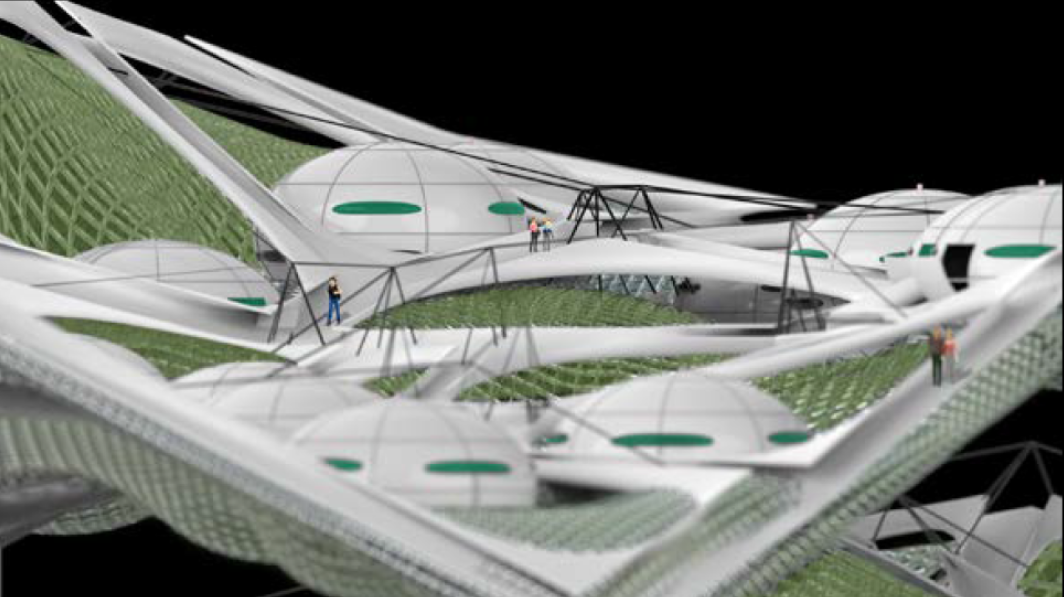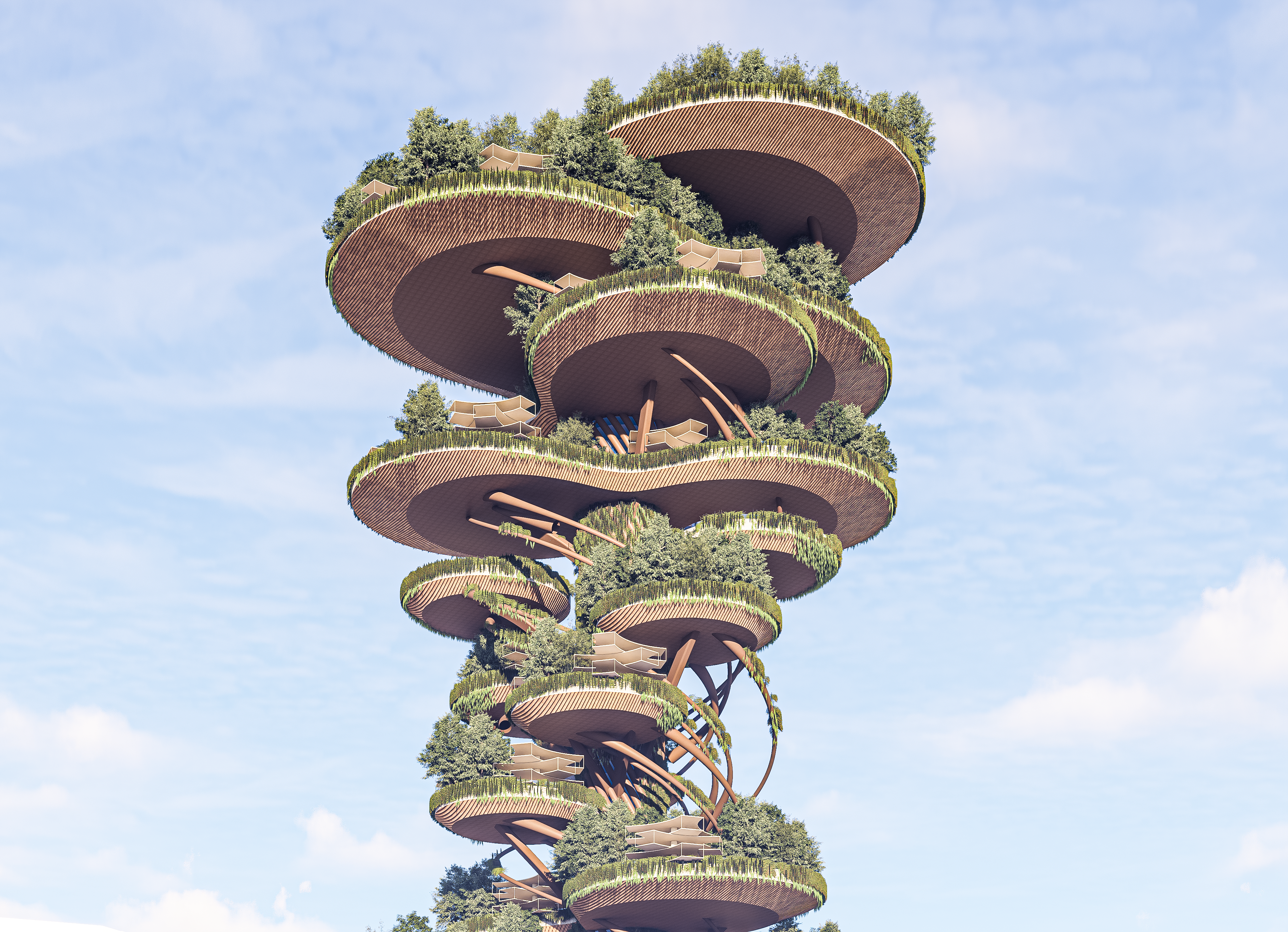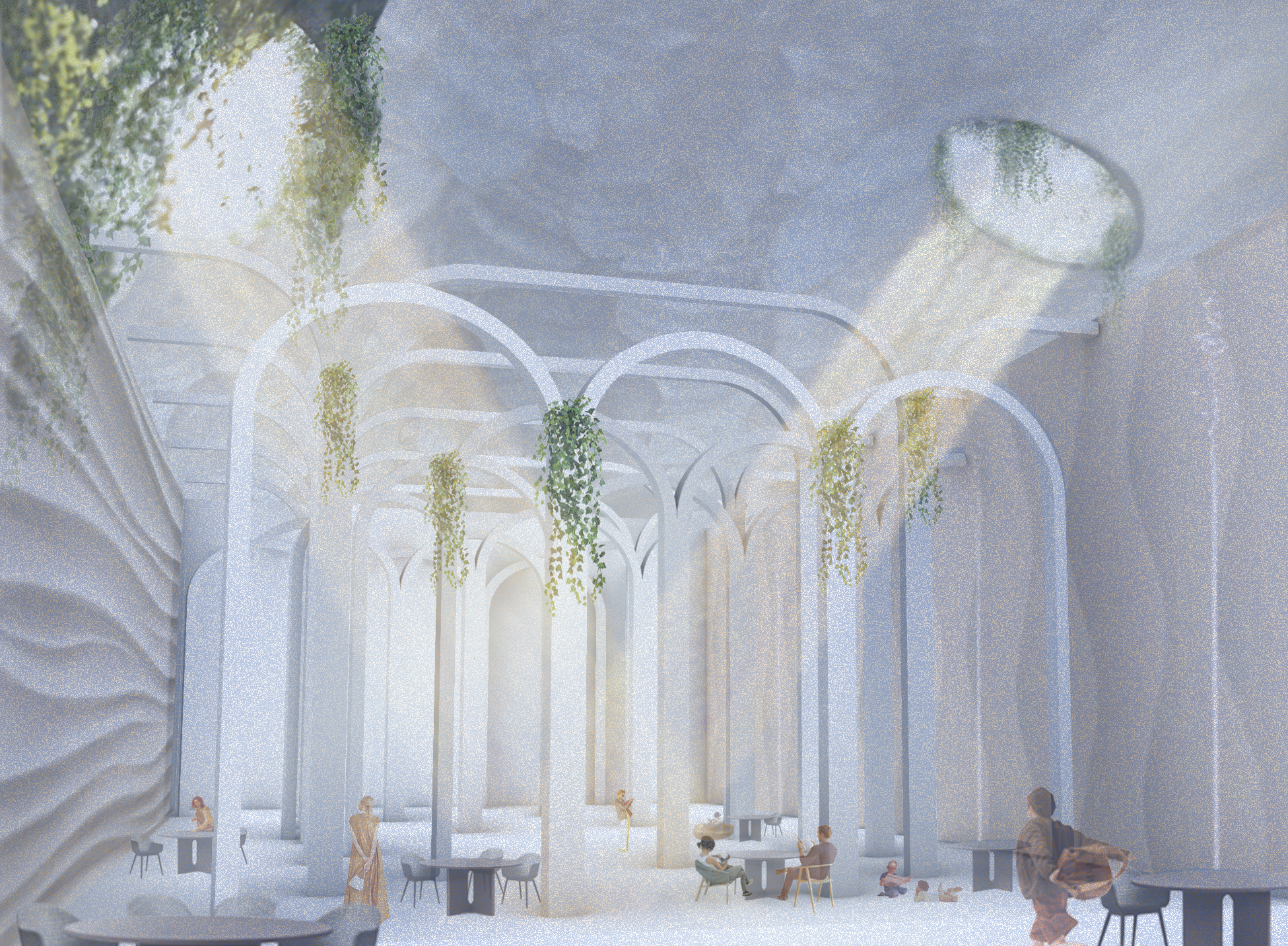
Credits: Superstudio, 1970
Metabolic Studio
Metabolic Studio aims to inspire students to think creatively and innovatively about design and architecture. The studio challenges participants to reevaluate our built environment and the architectural components that create our cities and buildings.

Credits: Assembled Waves. Palau de la Musica Catalana
Ziyad Wassef Abdelkader Youssef Ahmed, Cecile Ngoc Suong Perdu, J. Levy Rodriguez, Nan Yin. Metabolic Studio 2020
The studio aims to explore Advanced Architecture topics by integrating architectural stacking and the fusion of metabolic and natural processes with architectural design. By viewing nature abstractly and recognizing it as a closed system where everything is interconnected and no waste is produced, we can identify its various components, inherent processes, and elements. This knowledge will enable us to replicate some of these aspects using technology and design. Such understanding will allow us to apply these principles to architectural components, contrasting with cities that consume all nearby resources and produce waste, requiring even an external disposal method. Our focus will be on transforming the city of Barcelona in a hypothetical scenario set in 2050, where an already dense Barcelona must accommodate an additional 1 million residents (currently 1.6M inhabitants).
Students will be tasked with reimagining the city using techniques such as stacking, overlapping, and architectural hacking…, as the design of skyscrapers will not be an option. We will focus on the Poblenou neighbourhood and 22@ as a test ground for the re-densification of the city.
Barcelona, the horizontal city
Barcelona has implemented strict urban policies that no longer favour the construction of tall towers. With the arrival of the 21st century, and following the rise of new buildings in areas like Poblenou, Forum, and the Olympic Village, exemplified by structures like the Hotel Arts (and Mapfre Tower), standing at 154 metres, and Torre Glories with 144 metres, the city’s urban policy has evolved for having more control over the height of the buildings. The focus has shifted away from skyscrapers, and now, construction permits for new buildings do not allow heights exceeding 100 metres. Barcelona is perceived as a horizontal city, magnified by the Eixample grid of the Plan Cerdá. This design is harmonised by a controlled and measured height that is unlikely to surpass the tallest tower of the Sagrada Familia, the Jesus tower, which will stand at 172.5 metres. Emulating the Parisian model, Barcelona aims to be a dense, ultra-connected city with multiple centres and areas of interest, moving away from towering skyscrapers that clearly symbolise downtown as in other cities around the world.

Plan Cerdà, 1860
Barcelona, bounded by the sea, mountain, and rivers on either side, has exhausted its available land (100 Km2) and the Plan Cerdá and the expansion of the city is almost completed. With no room to expand outwardly, one of the only growth strategies hinges on densification. The future of Barcelona seems to lie in stacking and overlapping structures for increasing the available construction plots. With this premise, Metabolic Studio students will be asked to densify Barcelona with structures that can overlap the current city. Several examples around the world exist that exemplify the idea of stacking architecture and mixing uses while renovating older structures. For the purpose of this year’s exercise, students will have to use prefabricated components that offer smart, sustainable, high-quality, and efficient construction solutions.
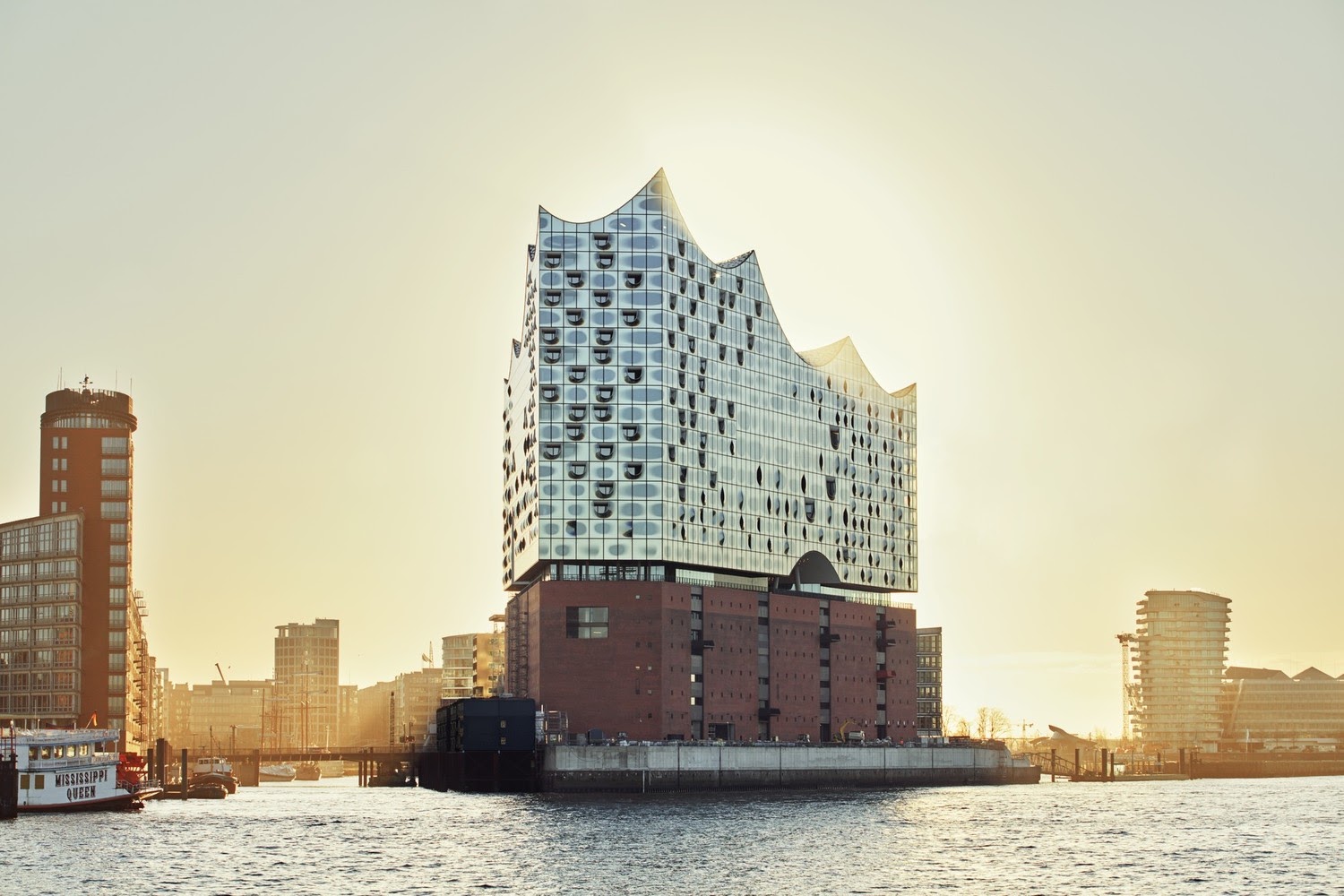
Hamburg Philarmonique, Herzog&DeMeuron. 2016
Prefabrication in Architecture
Prefabrication of architectural components is emerging and establishing itself as a dominant trend due to its potential to revolutionise the construction process and shorten its timelines. This approach, which often involves producing building components in a factory before assembling them on-site, offers significant advantages as enhanced efficiency, cost savings, and improved quality control. The integration of advanced technologies like CAD-CAM, robotics and 3D printing can streamline the prefab process, ensuring more precision and consistency than what can be achieved on site. The architecture and construction of the future has the potential to refine the resolution of its components, reducing on-site construction tolerances and improving the quality of the elements. The buildings of the future might evolve into large assemblies where components can be stacked, connected, and deployed with ease and virtually no time.
While prefabrication in architecture and construction provides numerous advantages, it also presents its own set of challenges. The primary concern is the transportation of large prefabricated components, which can be difficult over long distances or through areas with infrastructure limitations. Until recently, architects and designers often avoided prefabricated elements, as the design quality of the components tend to be less appealing than custom-made elements in construction. Architects used to label prefabricated buildings as “catalogue buildings,” where designers merely choose elements and combine them, diminishing the creative aspect of architecture. However, from the perspective of prefabricators, this isn’t the reality. Standard solutions can be highly customised, offering endless possibilities to decide which parts can be customised and built off-site, not to mention that architects and designers have the power to design and fabricate off-site its own elements, without having to look for them in a catalogue.
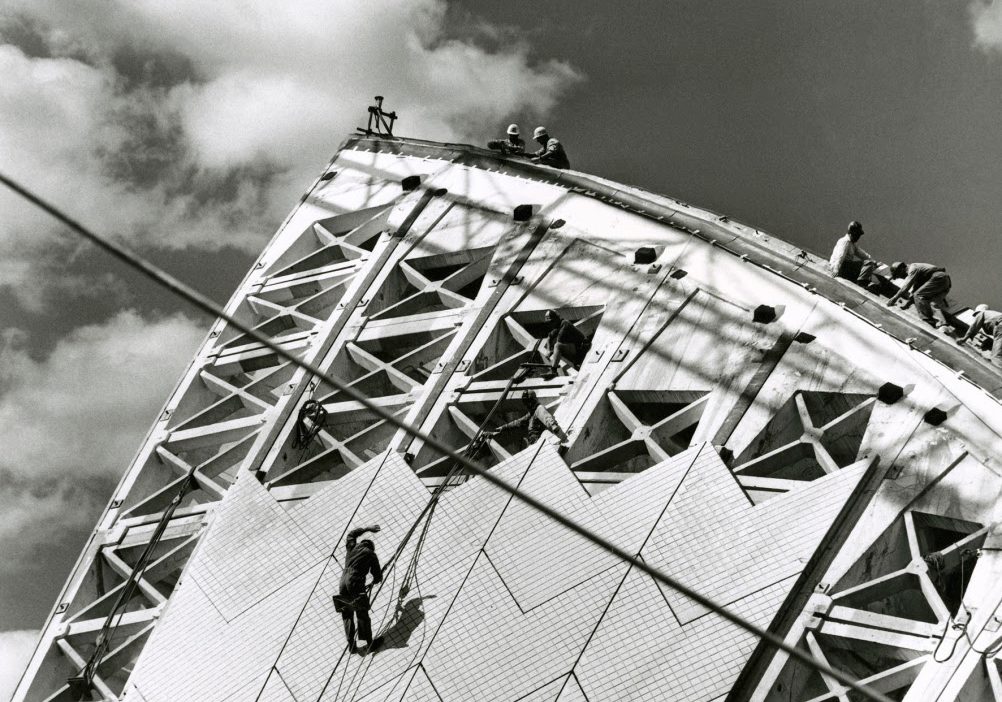
Prefabricated roof panels. Opera Sidney, ARUP. 1966
Topic of Work
Barcelona, 2050
By 2050, two out of every three people are likely to be living in cities or other urban centres, according to a new United Nations report, highlighting the need for more sustainable urban planning and public services. The population to be living in cities is expected to be by then 2.5Billion people.
To accommodate an additional million people in Barcelona, given the constraints of available space, designers, urban planners, and architects must think about innovative solutions to further densify an already compact city. Currently, Barcelona ranks 67th among the world’s most densely populated cities, with Manila at the top. With a population of 1.6 million spread over an area of 100 km2. If students successfully address the challenge of accommodating an additional million, the city’s ranking would rise to the top 10 based on today’s metrics, with a density of 26,000 inhabitants per km2, as a reference, each of the Eixample blocks are 1,24ha each.
However, this modern Barcelona must consider factors beyond those envisioned by Cerda in 1888 when the Eixample was envisioned. Cities and societies have evolved, and contemporary lifestyles differ significantly from the past. The question arises: how can architecture adapt to these shifts? Is architecture now a collective and bottom up approach? What is the next step from zoning in our cities, can city activities blend in other ways?
The aim of the studio it’s not merely about adding residences atop existing structures. Considerations extend to living conditions, the integration of nature and green spaces, and evolving transportation needs. The proposed architectural element to fill the blocks of the new city is the co-living space, where inhabitants can modify and design their living and work quarters to accommodate their lifestyles. We aim though, to steer clear of the stratified city concept often portrayed in sci-fi films. In such depictions, ultra-dense cities feature multiple levels, with the lower strata representing the city’s underserved areas and the upper symbolising affluent neighbourhoods. We envision a more equitable and holistic urban future.
The proposals will be tested in the 22@ district, initiated in 2000, and meant to transform the old industrial Poblenou area into a dynamic “innovation district” focused on the knowledge economy. Merging modern businesses with research institutions, the district emphasises environmental sustainability and the preservation of Poblenou’s cultural heritage. The plan prioritised a balanced urban environment, combining residential, business, and public spaces. Today, 22@ stands as a vibrant hub of startups, tech companies, and educational institutions, but with a huge flaw: at 18:00 it becomes empty when companies cease activity for the day. This can be exemplified further by the underlying numbers of the proposal: the goal was to create 3.2 million square metres designated for offices (80%), 686,000 square metres for housing, facilities, and services (17%), and 114,000 square metres of new green areas (3%).

22@ District, Barcelona. 2000
The goal of our re-densification of Barcelona aims to conserve the typical mediterranean style of the city, where a multiplicity of uses coexist in residential neighbourhoods, fostering the development of identities of population. In parallel, there is a need to re-envision traditional Mediterranean homes, which typically feature workspaces on the ground floor and living spaces above, to align with contemporary needs and lifestyles.
Metabolic smart Prefabs
Traditionally, architects’ perception of prefab has been rooted in the notion of concrete prefab elements, which offer limited flexibility. Is it possible to apply concepts from the Internet of Things (IoT) field to the prefabrication of architectural components? Can those components adapt and give specific responses to architectural needs?
The next generation of prefabs, and the ones we pretend to work with, will go beyond mere structure and envelope. They will seamlessly need to integrate advanced technologies and sustainable designs. A key feature will be the incorporation of IoT for energy optimization, as these prefabs will be constructed from sustainable materials with a strong emphasis on energy efficiency. In our case, they will also need to be light to be able to stack them on top of the existing Barcelona.
Students will be tasked with the design of these prefabricated elements, exploring how they can influence and innovate within the established design paradigm. We will use Metabolic concepts to achieve sustainability in them, as they must be attuned to their surroundings and establish connections with them. Flexibility will be paramount, as future design will be a collaborative effort, shaped by contributions from the very inhabitants of these spaces. The primary goal of these prefabs will be to foster co-living environments.
Learning Objectives
At course completion the student will:
- Understand the relationships of buildings within the city context, technology, and society.
- Create advanced architectural proposals that deal with metabolic processes with the exchange of energy and matter, understanding the details of the metabolic pathways.
- Have a clear understanding of some of the interdependence between different uses in the city.
- Elaborate critical thinking about the relationship between architecture and environment, climate and pollution, and citizen empowerment.
- Add a new critical and radical point of view on how cities should be in the future and think outside the box when it comes to sustainable construction.









